|
UPDATE!
July 22nd, 2011
Since reviewing this fine Ruger single-shot
rifle almost two years ago, Kelye Schlepp of Belt Mountain
Enterprises has developed a new 475 caliber bullet especially
for this and other long-throated 475 caliber rifles, such as the
475 Turnbull. In this single-shot Ruger, overall cartridge
length is not a limiting factor, as it is with a 480 lever gun
or a 475 or 480 revolver. I have used the Belt Mountain Punch
bullets for a few years now, and have found nothing that
penetrates better. For use on any large game in the world,
including the large bears, buffalo, and even elephant, the Belt
Mountain Punch bullet would be my bullet of choice, when the
deepest, bone-crushing straight-line penetration is needed.
This newest Punch bullet effectively adds
about a quarter-inch of powder capacity to the 475 Linebaugh
case, compared to a 370 or 380 grain Punch bullet. Getting more
case capacity with a heavier bullet is of great benefit, and
allows the Punch bullet to be pushed much faster than a bullet
which is made to hold to the standard overall loaded cartridge
length of the 475 Linebaugh. The long-throated Ruger, with the
design of the bore-riding front portion of the Belt Mountain 400
grain Punch, enabled me to safely push that bullet to over 2000
feet-per-second (fps) from the barrel of this Ruger No. 1 rifle.
That is almost 500 fps faster than I can safely push the 370
grain Punch bullet from this same rifle! I also pushed the 400
Punch even faster, but pressures were excessive, so I backed
down to my goal of 2000 fps. This was safely accomplished using
Hornady cases, a Federal 210 primer, and 40 grains of H110
powder. Please note that this load has not been
laboratory-tested, and is not recommended by anyone. It is safe
in MY Ruger single-shot rifle, but if you want to
try it, back down about five grains and work up from there. With
this Punch bullet, there is no need to try and make a 475 Swift
out of it. This bullet even at 1750 fps will penetrate deeper
than is ever needed, but pushing it to 2000 fps makes it hammer
the target harder, and to shoot a bit flatter. At 2000 fps,
extraction was easy, case head expansion was normal, and there
were no signs of excessive pressure. Remember, I am not a
ballistician, just a shooter trying to get more out of this 475
Linebaugh Ruger No. 1 rifle, and this new bullet from Belt
Mountain Enterprises allows me to get significantly more power,
and to do so without exceeding the limits of this fine rifle.
For more information on this
new 475 Punch bullet, go to www.beltmountain.com.
  
Way back in 1967, Ruger
introduced their second centerfire rifle. Everybody figured that
it would be a bolt action rifle built for hunters, as the bolt
action was becoming more and more popular every year. Along with
the bolt guns, hunters were still buying large quantities of
lever action rifles. Around here, most hunters bought either a
lever action Winchester or Marlin, but well-heeled sportsmen
were taking to the field with semi-auto Remington Model 742
rifles. Back then, Riley Hardware in Clarksville, Tennessee was
the place to buy anything Remington, and they sold thousands of
the fast-shooting 742 rifles. At Riley’s, they kept all the
guns upstairs. None were on display, but the floor downstairs
was covered with ammunition. The loading dock was on the front
of the building, and just inside the big sliding door were
pallets and pallets filled with cases of Remington ammo. As a
wide-eyed kid, I loved to go to Riley’s and gaze at the ammo.
The 742 was the rifle to have back then. If a man took afield
with his levergun and missed a deer, he would blame the rifle
and go buy a 742. Of course, he might still miss the target with
the new rifle, but he would manage to send a lot more lead
flying. In those days of everyone wanting fast-shooting
repeating rifles, Ruger introduced a single shot, called simply
the No. 1. Single shot rifles were a thing of the past. Many of
the old Winchesters had been converted to heavy-barreled varmint
guns, and the rest were wall-hangers, but nobody carried a
sporter weight single shot afield anymore. The No. 1 didn’t
appeal to the majority of hunters, but there were a few riflemen
who understood the simplicity and elegance of the concept of
that one well-placed shot, and the No. 1 was a success in the
marketplace. Designed to be the best single shot rifles ever
built, the No. 1 is certainly one of the most elegant and
strongest. I particularly love the graceful lines of the
sporters, with their Henry forends and straight-combed
buttstocks. Over the course of the past four decades, the No. 1
has been chambered for just about any rifle cartridge
imaginable, and for a couple of revolver cartridges as well.
Accuracy varies from good-enough to excellent, depending upon
the cartridge and the shooter’s ability. There are still those
hunters and shooters who do not get the concept of going afield
with a single shot, but there are many who appreciate the fine
lines, easy handling, and simplicity of a fine single shot
rifle. For those, there are now a few good single shot rifles on
the market, and the No. 1 is one of the best.
Built for hunting game from the smallest of
vermin to the largest pachyderms, the No. 1 is chambered for a
wide variety of cartridges. Currently there are twenty-five
chamberings catalogued for the No. 1 rifle, from the .204 Ruger
to the .458 Lott in rifle chamberings, but the biggest bore ever
offered in the No. 1 is the one featured here, the .475
Linebaugh. Designed by John Linebaugh as a powerful revolver
cartridge, the .475 Linebaugh has proven to be capable of taking
the world’s largest game from high quality custom Rugers,
Sevilles, and the excellent Freedom
Arms Model 83 revolvers. Chambering the No. 1 for the big
handgun cartridge is an interesting concept. In a rifle barrel,
the .475 is a very efficient cartridge, using less powder and
having a bigger bore than the long big-bore rifle cartridges
commonly associated with the No. 1-H Tropical rifle. Also, using
the medium sporter design for the .475 Linebaugh, the rifle is a
lot lighter in weight than the heavy-barreled 1-H Tropical
version. The sample 1-S .475 Linebaugh weighs in at exactly
seven pounds on my scale, while the Tropical rifles are listed
at nine pounds in Ruger’s catalog. The muzzle diameter of the
twenty-two inch barrel measures just .678 inch, and that huge
bore leaves a relatively thin tube, making the .475 a
great-handling, lively-feeling rifle, coming to the shoulder
quickly, much like a good bird gun. The balance point of this
rifle is exactly at the front of the receiver, and makes the
rifle a delight to carry.
The wood on the sample rifle is American
walnut, and has some nice figure to it. The hand checkering is
well-executed, and makes the rifle easier to hold when the hands
are slippery. The classic straight comb of the buttstock is both
elegant and functional, aligning my eye perfectly with the open
sights, and works well with a low-mounted scope. The pistol grip
is capped with a blued steel grip cap, and the butt wears a
synthetic rubber pad. A sling stud is attached to the buttstock,
and another is integral with the barrel band. Sling swivels are
also provided. Like all Ruger centerfire rifles, the No. 1 comes
with scope rings, and they attach to the quarter rib on the No.
1 design. The rear folding leaf sight is also attached to the
quarter rib, and the front is integral with the muzzle barrel
band.
On the No. 1 design, the hammer is concealed,
and a gracefully-shaped under lever drops the falling block for
loading and unloading the rifle. The lever locks into the
trigger guard when closed. Dropping the lever also cocks the
hammer, and a shotgun-style safety is atop the action, working
equally well for both right and left-handed shooters. The
ejector works well to extract and eject spent cartridge cases,
and it can also be adjusted to extract only, if desired. The
trigger pull on the test rifle measured a crisp four and
one-quarter pounds. Ruger advises leaving the trigger adjusted
as delivered, and the manual states to leave the trigger
adjustments alone. I am satisfied with the trigger pull on the
test gun as is.
While the No. 1 has very good open sights, I
shoot better with a scope, and the perfect scope for this No. 1
is the superb Leupold VX-III 1.5 to 5 power variable. This dandy
scope offers very good optics, plenty of magnification, and long
eye relief. Set on its lowest setting, I can shoot with both
eyes open for close range shots, or crank the power up for
threading a bullet through brush at longer ranges. The Leupold
is also sized right for the No. 1, and just really looks like it
fits with the compact, graceful lines of the rifle.
While once a wildcat cartridge, shooters had
to make .475 Linebaugh cartridge cases by cutting .45-70
Government cases down to approximately 1.4 inches in length.
Now, factory-loaded .475 Linebaugh ammunition is available from
Buffalo Bore, Grizzly Cartridge, and Hornady.. The .475 No. 1
can also fire the slightly shorter .480
Ruger cartridge, and factory ammo is available for it as
well from the same ammunition companies, as well as Cor-Bon. Starline
and Hornady offer new cartridge cases, and dies are readily
available for handloading the .475 Linebaugh and .480 Ruger
cartridges. For handloading the cartridges for this No. 1, I
used Hornady dies. I tried several bullet and load combinations,
with my favorites listed in the chart below.
Firing the No. 1 was pleasurable. Recoil was
not bothersome, even when shooting from the bench. The .475/.480
is very efficient in a carbine or rifle. Most loads delivered
about 200 feet-per-second (fps) more velocity than I have noted
from shooting the cartridges in revolvers. Not only does the
long barrel more completely burn the powder, but the lack of a
barrel/cylinder gap helps as well. All velocity readings were
taken at twelve feet from the muzzle. Temperature was in the 85
degree Fahrenheit range, at an elevation of approximately 450
feet above sea level. Velocities are listed in feet-per-second.
Bullet weights are listed in grains. XTP is a Hornady jacketed
hollowpoint bullet. JSP is a jacketed soft point bullet. LFN is
a cast lead flat-nosed bullet. DPX is a Barnes copper X bullet.
Punch is the excellent Belt
Mountain lead-core brass bullet. I tried both .475 Linebaugh
and .480 Ruger factory ammo in the Ruger, and both performed
well. All handloads were assembled in .475 Linebaugh cases. All
handloads used a CCI 350 primer, with the exception of the loads
using Trail Boss powder. In those, a Winchester WLP primer was
used. Powder weights are listed in grains.
Factory Loads
|
Ammunition |
Bullet Weight |
Velocity |
|
.480 Ruger |
|
|
| Buffalo Bore .480 LFN |
370 |
1588 |
| Buffalo Bore .480 LFN |
410 |
1385 |
| Grizzly Cartridge .480 JSP |
350 |
1399 |
| Grizzly Cartridge .480 Punch |
340 |
1210 |
| Grizzly Cartridge .480 LFN |
375 |
1389 |
| Grizzly Cartridge .480 JSP |
400 |
1201 |
| Hornady .480 XTP |
325 |
1572 |
| Cor-Bon .480 DPX |
275 |
1794 |
|
.475 Linebaugh |
|
|
| Buffalo Bore .475 LFN |
420 |
1624 |
| Grizzly Cartridge .475 LFN |
325 |
1706 |
| Grizzly Cartridge .475 LFN |
425 |
1463 |
| Hornady .475 XTP |
400 |
1487 |
Handloads
| Bullet |
Bullet Weight |
Powder |
Charge Weight |
Velocity |
| Belt Mountain Punch |
370 |
H-110 |
27.8 |
1576 |
| Belt Mountain Punch |
370 |
H-4227 |
28.3 |
1435 |
| Barnes XPB |
275 |
AA #9 |
28.0 |
1871 |
| Barnes XPB |
275 |
H-110 |
34.6 |
2043 |
| Barnes XPB |
275 |
H-110 |
37.0 |
2122 |
| Cast Performance LFN |
425 |
H-110 |
25.2 |
1488 |
| Cast Performance LFN |
425 |
H-110 |
27.8 |
1619 |
| Cast Performance LFN |
425 |
Trail Boss |
6.2 |
685.3 |
| Cast Performance LFN |
425 |
Trail Boss |
5.0 |
586.3 |
None of the handloads tested showed any signs
of excessive pressure, and extraction was easy with all factory
ammunition and handloads. Note that most of the handloads were
seated long when necessary to increase powder capacity, and
should not be used in revolvers. The loads were safe in the test
gun only, and all loads should be carefully worked up to in any
other firearm. The two loads listed using the Trail
Boss powder are very quiet loads, and would work well for
close range varmint control where noise would be a factor, such
as eliminating wild dogs and such in a suburban area. The big
heavy slugs penetrate well, even at the greatly reduced
velocities.
Accuracy was very good with all ammo tested,
even the reduced loads. The low velocity loads would cluster
into less than one and one-half inches at 50 yards. The
full-power loads did much better, shooting tight groups at 100
yards. No testing was done out beyond 100 yards on paper. With
some loads, the No. 1 proved to be very accurate, and would be
suitable to take the largest of game anywhere on the planet.
The No. 1 .475 Linebaugh is a light, handy,
and beautiful rifle. Usually these single shot rifles are
chambered for traditional rifle cartridges, but the .475 and
.480 cartridges have merit, being more efficient, getting the
job done with less powder, less noise, and reduced recoil
compared to a rifle cartridge of similar power. Also, the .475
is the biggest bore that Ruger has ever drilled in a rifle
barrel, and those big slugs make an impressive hole in things
that have claws and teeth. The 425 grain Cast Performance bullet
is a good, general purpose bullet, offering bone-smashing power
on large mammals. For deer and hogs, I really like the 275 grain
Barnes XPB. It penetrates deeply and expands very well in flesh.
When the ultimate penetration is needed on the largest critters,
the Belt Mountain Punch bullet has no equal, and I highly
recommend it. These three bullets will cover anything that I
might ever need to do with the .475 Linebaugh cartridge in this
rifle. If you do not handload, the wide variety of premium
factory ammunition available will easily cover any need., and
this No. 1 has the power and accuracy needed to put down any
animal on Earth.
Check out the full line of Ruger products
here.
To find a Ruger dealer near you, click on the
DEALER LOCATOR at www.lipseys.com.
To order the No. 1 online, go to www.galleryofguns.com.
For a look at the complete line of Leupold
optics, go to www.leupold.com.
To order any of the premium ammunition shown
here, go to www.buffalobore.com,
www.grizzlycartridge.com,
www.hornady.com,
and www.cor-bon.com.
To order the bullets shown here, go to www.beltmountain.com,
www.castperformance.com,
and www.barnesbullets.com.
Jeff
Quinn
NOTE: All load data posted on this
web site are for educational purposes only. Neither the author nor
GunBlast.com assume any responsibility for the use or misuse of this data.
The data indicated were arrived at using specialized equipment under
conditions not necessarily comparable to those encountered by the
potential user of this data. Always use data from respected loading
manuals and begin working up loads at least 10% below the loads indicated
in the source manual.
| For a list of dealers where you can
buy this gun, go to: |
|
To buy this gun online, go to: |
 |
|
 |
|
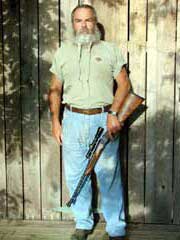
The .475/.480 No. 1-S is a very compact and
handy package.
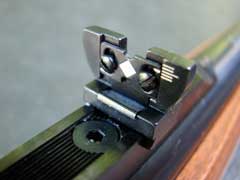
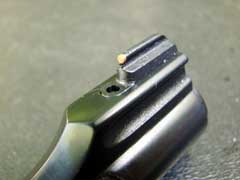
Sights consist of adjustable folding leaf rear
and brass bead front.

Rear sight and scope mounts are integrated into
the barrel rib.

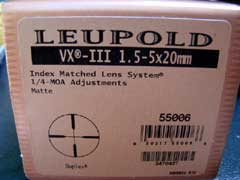
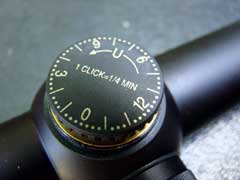
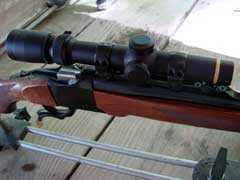
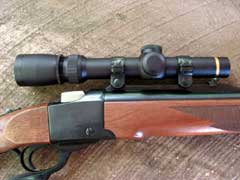
A great rifle deserves a great scope, such as
Leupold's VX-III 1.5-5X variable.
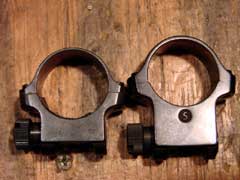
Rifle comes with higher rings (right), but
author used a set of lower rings (left) to mount the
Leupold scope.
|
  
Got something to say about this article?
Want to agree (or disagree) with it? Click the following link to
go to the GUNBlast Feedback Page.
|
|
Click pictures for a larger version.
UPDATE!
July 22nd, 2011
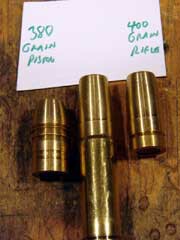
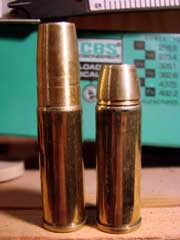
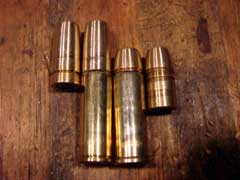
Original 380-grain Punch bullet to the new longer
400-grain version.
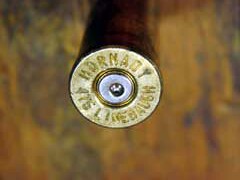
Even at over 200 fps, no signs of excessive pressure
are seen.
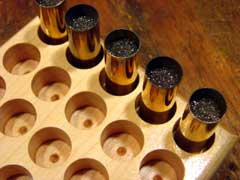
Cases filled with 40 grains of H110 powder.
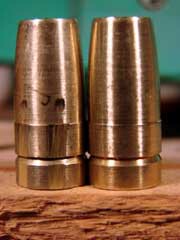
Fired bullet (left) could be loaded and used again,
after penetrating 16 inches of seasoned wood and several
inches of tightly-packed dry paper.
  
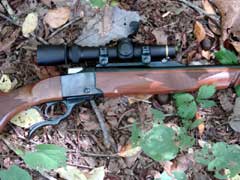
Ruger's .475 Linebaugh / .480 Ruger No. 1-S Medium
Sporter rifle.
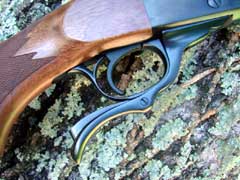

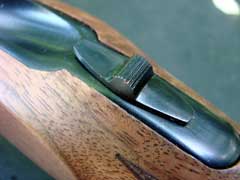
Safety is on top, right where it should be.
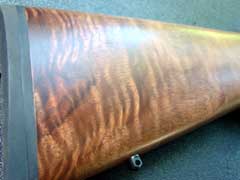
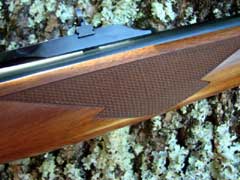
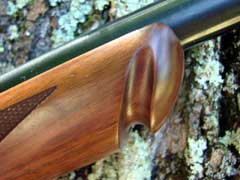
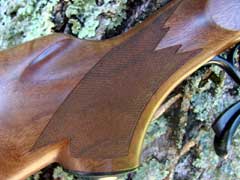
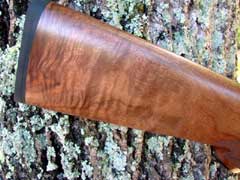
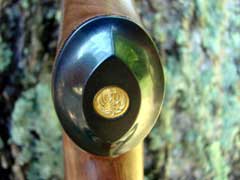
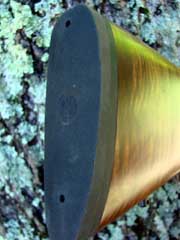
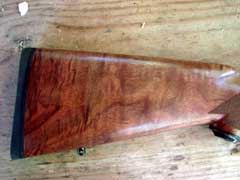
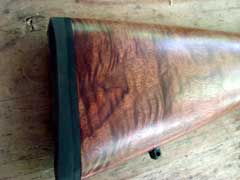
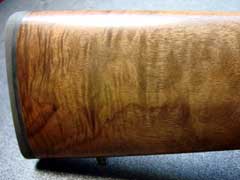
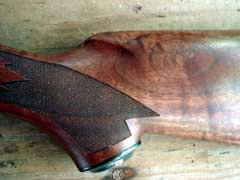
American walnut stock is well-figured and
well-executed.
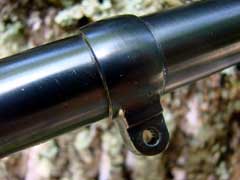

Rifle is factory-equipped with sling swivel studs.
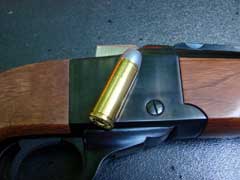
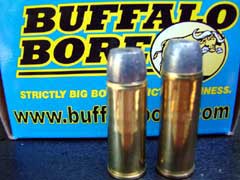
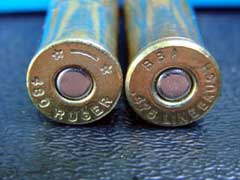
Rifle uses both .475 Linebaugh or .480 Ruger
ammunition.
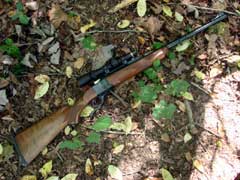
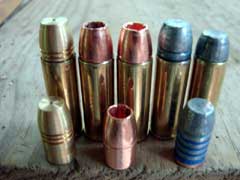
Favorite handloads use (left-right): Belt Mountain
Punch, Barnes XPB, and Cast Performance bullets.

Barnes' XPB copper bullet after firing into water
shows dramatic and uniform expansion.
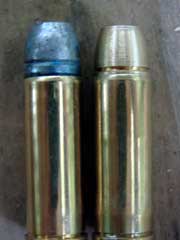
Jeff seated bullets long to increase powder capacity.
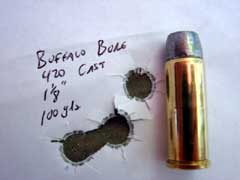
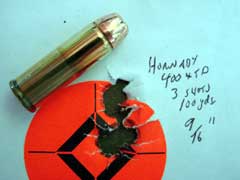
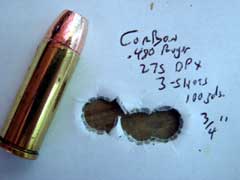
100-yard groups using factory loads.
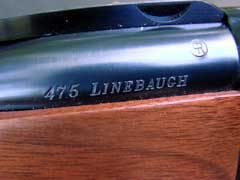
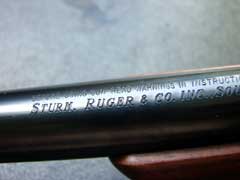
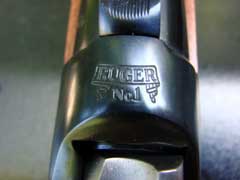
|
![]()